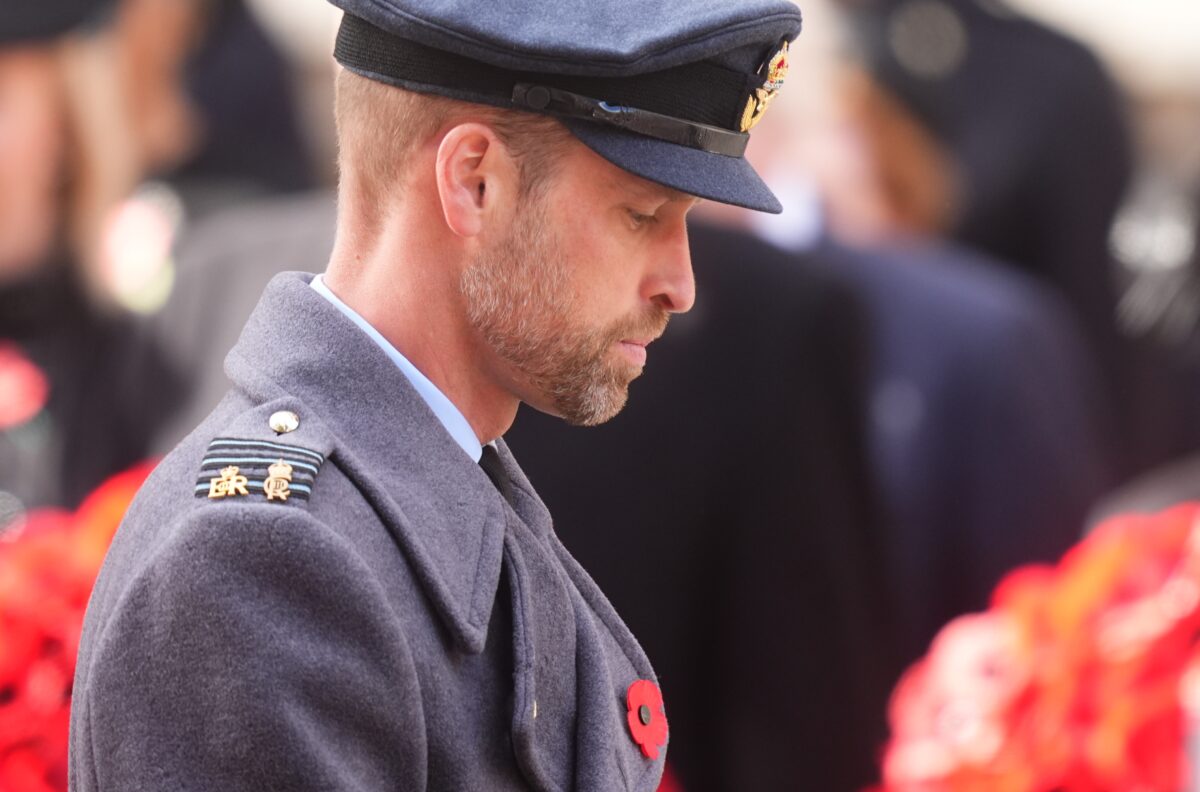What does wearing a Red Poppy really mean? Prince William’s powerful Armistice Day message inspires a new generation

Prince William on Remembrance Sunday. Image Credit: PA
Each year, on Armistice Day, millions across the UK and Commonwealth wear a red poppy, a small flower with a powerful message. It honors the bravery, sacrifice, and service of soldiers who fought in wars past and present. This year, Prince William has renewed the call for remembrance, urging young people to understand what the poppy truly represents.
Prince William Urges Young People to Embrace Remembrance
In a heartfelt video message broadcast to schools across the UK, Prince William, the Prince of Wales, encouraged students aged 9 to 14 to wear a poppy and take part in Armistice Day reflections. “Armistice Day is an important time for us to stop and reflect,” he said. “When we wear a red poppy or take a moment of silence, we are saying, ‘Thank you. We have not forgotten, and we will not forget.’”
The message, aired during the Royal British Legion’s virtual Remembrance Assembly, aims to connect younger generations with the values of empathy, courage, and service. William emphasized that remembrance is “not just about the past, it’s about shaping who we become in the future.”
READ ALSO
The Red Poppy: A Symbol of Sacrifice and Hope
The red poppy has long symbolized remembrance since World War I. Inspired by the poem “In Flanders Fields” by John McCrae, the flower became an emblem of the soldiers who died in battle and the resilience of those left behind. Wearing the poppy is both a tribute to the fallen and a promise to uphold peace and unity.
Prince William’s reminder carries added meaning today, as global conflicts continue. His message ties remembrance not just to history, but to compassion and responsibility in the modern world.
Royal Family Leads National Commemoration
Over the weekend, Prince William joined King Charles III and Queen Camilla at the Remembrance Sunday service at the Cenotaph. His son, Prince George, attended the Festival of Remembrance at the Royal Albert Hall for the first time, signaling a new royal generation carrying on the tradition.
Meanwhile, the Princess of Wales will attend the Armistice Day Service at the National Memorial Arboretum in Staffordshire. The ceremony will feature a specially commissioned poem, “A Sonnet for Us All”, reflecting on unity and remembrance, themes close to her heart.
Armistice Day: Why It Still Matters Today
Observed on November 11, Armistice Day marks the end of World War I in 1918, when peace was declared after years of devastating conflict. But its meaning goes beyond history. It’s a day to reflect on the sacrifices made for freedom and to honor veterans and serving members of the armed forces around the world.
Prince William’s words serve as a call to action, to remember, to empathize, and to ensure that the stories of courage and loss are never forgotten. Wearing a red poppy is more than a tradition, it’s a personal statement of gratitude and peace.
FAQ
1. What does wearing a red poppy mean on Armistice Day?
Wearing a red poppy honors those who lost their lives in military service. It symbolizes remembrance, gratitude, and the hope for peace. The tradition began after World War I, inspired by the poem “In Flanders Fields.”
2. Why does Prince William encourage young people to wear poppies?
Prince William believes remembrance connects generations and teaches empathy, resilience, and respect. His message aims to help younger people understand the sacrifices that protect their freedoms today.
3. What is the difference between Armistice Day and Remembrance Day?
Armistice Day marks the exact anniversary of the end of World War I on November 11, 1918. Remembrance Day, also observed on the same date, has grown to honor all military personnel who died in conflicts since then.
4. Who organizes Armistice Day events in the UK?
The Royal British Legion (RBL) organizes nationwide events, including school assemblies, remembrance services, and the Poppy Appeal to raise funds for veterans and their families.
5. Why is the red poppy red?
The red color represents the blood shed by soldiers during war. It also stands for both sacrifice and renewal, a flower that grew among the devastation of the battlefields in Flanders.
6. How can I take part in Armistice Day?
You can wear a red poppy, observe the two-minute silence at 11 a.m., attend local remembrance services, or donate to the Poppy Appeal to support veterans.
7. What did Prince William say about remembrance?
Prince William said remembrance is not only about the past but about shaping who we become. He emphasized that “their memories matter, their lives matter,” urging people to be kind, brave, and thoughtful every day.
8. What poem will be read at the Armistice Day service?
A new poem titled “A Sonnet for Us All”, written by Arji Manuelpillai, will be read at the National Memorial Arboretum, focusing on unity, empathy, and remembrance.
9. Where did the poppy symbol originate?
The poppy became a remembrance symbol after American professor Moina Michael and the Royal British Legion adopted it following the First World War, inspired by the blooming red poppies across battlefields.
10. Why is remembrance important today?
Remembrance ensures the sacrifices of the past are never forgotten. It reminds us of the cost of freedom and inspires future generations to work toward peace and understanding.


